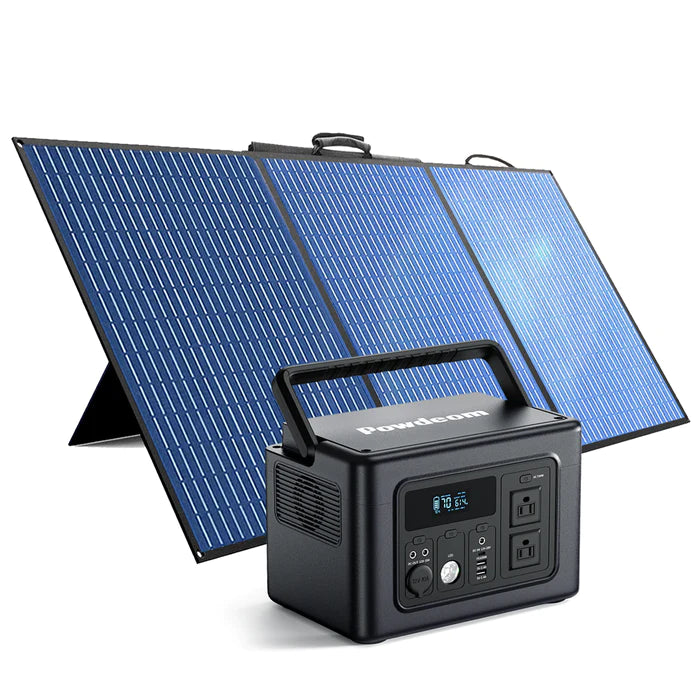The amount of energy generated by a solar design may be estimated with some precision using mathematical modeling, although this requires careful attention to a wide range of component characteristics. Modeling software must consider whether or not the inverter(s) employed are capable of "global maximum power point tracking" to prevent over or underestimating the system's energy output.
We'll go into the meaning of "global maximum power point monitoring" and why it's crucial to take into consideration in this piece.
What Is An MPPT Charge Controller?
The term "Maximum Power Point Tracking" (MPPT) refers to a method of controlling the charging of a storage battery bank. An MPPT charge controller's role is similar to that of a car's gearbox. The wheels don't get the most power possible when the gearbox is in the incorrect gear. The reason for this is that the engine is operating outside of its optimum speed range. The transmission's job is to transfer power from the engine to the wheels in a manner that allows the engine to operate in an optimum speed range regardless of the vehicle's acceleration rate or the surface over which it is traveling.
Whenever a load is connected directly to a solar panel, the operating point of the panel is not at peak power. The operational point of the solar panel is determined by the resistance it encounters. As a result, the operating point may be shifted toward the peak power point by adjusting the impedance observed by the panel. A DC-DC converter is used to change the impedance of one circuit (source) to another DC circuit since panels are DC devices (load).
When the DC-DC converter's duty ratio is adjusted, the resulting impedance is read off of the screen and displayed. The operational point is located at the maximum power transfer impedance (or duty ratio). Changes in air conditions, such as radiation and temperature, may significantly impact the panel's I-V curve. Since working circumstances are always changing, setting a constant duty ratio would be impractical.
Increasing The Voltage Of The Panels To Extract Maximum Power
For batteries to be charged this way, the solar panel's output voltage must be higher than the batteries' voltage to allow current to pass from the panel to the battery.
The panel's voltage output varies with environmental conditions such as temperature and humidity (irradiance). The actual output voltage may be greater than the specified value on a bright day, whereas it is more likely to be lower on a gloomy day. Regular controllers can't use the greater output voltage to pump out additional juice. On the other hand, MPPT charge controllers may alter the voltage to increase the current at peak demand. With their ability to fine-tune the voltage-to-current ratio, MPPTs can charge batteries to greater depths than their specifications allow.
What Are The Advantages Of MPPT?
- The power produced by the solar array may be determined by monitoring the DC voltage and current at the system's output and using the maximum power point tracking algorithm. Since MPPT may aid in producing greater power outputs, it can be used to better effect in almost any solar-related application; more benefit would be received when the module's operating voltage is high. During low solar radiation and high temperatures, power may be lost unless Maximum Power Point Tracking is used.
- The mini-turbine, wind turbine, and other sectors might benefit from using an MPPT solar charge controller as well.
- MPPT would reduce complexity and boost efficiency in the system.
What Is The Difference Between MPPT And PWM Charge Controllers?
Charge controllers manage the energy produced by solar panels. It controls the flow of electricity to the batteries by adjusting the voltage and current. A charge controller regulates the battery's voltage to avoid overcharging and undercharging. So, it serves to safeguard the system. A charge controller is essential to every solar power setup. Separated into two categories, charge controllers are either PWM (Pulse Width Modulation) or Maximum Power Point Tracking (Maximum Power Point Tracking)
PWM is an abbreviation for "pulse width modulation." Power factor correction (PWM) charge control devices may be considered electrical switches. Turning the switch on and off is a simple process. Thus, the batteries may be charged to the appropriate voltage. The charge current will be gradually reduced as the batteries are fully charged.
Maximum PowerPoint Tracking describes this method to its fullest. In other words, maximum power point tracking is a method for monitoring and controlling energy flow from solar panels to storage batteries. Power generation from solar panels varies with the seasons and other environmental factors.
By regulating the voltage between the solar panels and the batteries, MPPT charge controllers improve the effectiveness of the charging process. Using the P = V x A relationship, these setups make the most of solar panels by equitably distributing the power between the two variables. When the sky is overcast, less current is pulled from the panels to save voltage. Sunnier days allow for higher current consumption limits.
The primary difference between PWM and MPPT, charge control devices, is efficiency. The charging efficiency of MPPT control devices is 30% higher than that of PWM type devices. In PWM systems, it's important that the panel voltage and battery voltage be in sync. It is acceptable for the panel series to have a greater voltage than the batteries in MPPT systems. There will be greater room for expansion as a result.
However, MPPT controllers are more costly than PWM controllers. This is why PWM charge controllers are still widely used in low-power applications where efficiency is less concerned.
When selecting a charge management device, it is vital to consider the whole system size of the solar power installation. Professional use is best served by maximum power point tracking charge controllers. PWM charge regulators may do the trick in low-power situations when more features aren't necessary. There may need to be more of a difference in efficiency between PWM and MPPT to warrant the cost difference in less significant projects. However, it is crucial to the system's success when it comes to major projects.
There are essentially four key distinctions
- When comparing MPPT and PWM charge controllers, the former is the more efficient option. PWMs have a conversion efficiency of roughly 75%, whereas MPPTs may reach efficiencies of 95%.
- Price-wise, PWM charge controllers are more attractive than MPPT charge controllers. Popular PWMs typically cost between $20 and $50, whereas inexpensive MPPTs may be purchased for about $100.
- Multiple solar panels are often wired in parallel when using a PWM charge controller. Most maximum power point tracking charge controllers may be wired in series with PV systems because of their high PV voltage restrictions. Because of the larger current (amperage) produced by parallel wiring, heavier wire and devices with higher current ratings may be necessary.
- Smaller solar arrays, typically between 300 and 400 watts, are ideal for PWM charge controllers. Higher-powered solar systems (often those producing 400 watts or more) benefit greatly from MPPT charge controllers. MPPTs become more economically viable as solar array size increases.
Are MPPT Solar Charge Controllers Worth It?
While the MPPT is more efficient overall, it is not well-suited for low-power devices. The MPPT charger controller is essential for high-output systems that rely on more than one solar power grid. If the voltage from the panel is more than 8V, the MPPT should be utilized instead of the PWM. Also, their power output efficiency is 30% higher than the PWM's, meaning they provide greater throughput.
As the panel's voltage rises, the MPPT's power output also increases. For instance, a 160W panel consisting of 36 regular monocrystalline cells with a maximum power amp of 8.4A would output about 8.6A at 12V. The 180W panel, which contains four different cells, will still provide the same amperage but at a higher voltage of 2V.
Is it prudent to purchase an MPPT controller?
Dealing with a high-voltage solar panel grid is very dangerous without the MPPT. Since they are around 30% more efficient than PWM technology, they have found widespread application in major companies. They are also considerably easier to utilize than PWM in low-light or overcast conditions. Therefore, the device's throughput is much higher than competing technologies.
The only drawbacks are a more initial investment, higher maintenance costs, greater physical size, and lower lifetime compared to PWM. But with MPPT, things will be different for the better for the user.
To Sum It Up
While MPPT controllers are more costly, they allow for more panel flexibility. Because of the battery bank's higher voltage, the PV module's voltage will decrease, causing a higher current to flow.
Increased amperage leads to quicker charging. These solar charge regulators will fine-tune themselves according to the P = V x I equation. This means that, in contrast to PWM, you'll get more power to charge the battery without waste.
With an MPPT controller, a solar array's voltage may be greater than the battery bank's. Where irradiance is low, this is particularly crucial in the winter when daylight hours are shorter.
They improve charging efficiency by 30% compared to PWM. More adaptability will facilitate system growth. This is crucial for commercial enterprises. Typically, their warranties are longer than those of PWM models.
MMPT should be employed in high-output battery devices as an alternative to PWM technology. Besides improving the device's productivity and throughput, it is easier to use. However, PWM must be prioritized for low-power devices since formal charges are wasteful.



